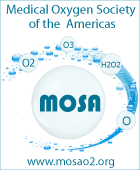|
|
 |
MOSA - Article
|
|
 |
Herbal Medicine and Liver Damage:
Seven Dangerous Herbs for Your Liver |
 |
 |
http://hepatitis.about.com/od/treatment/tp/HarmfulHerbs.htm
Herbal Medicine and Liver Damage
Seven Dangerous Herbs for Your Liver
Herbs are a popular alternative treatment for many conditions, including types of liver disease. However, just because a remedy comes from a plant and has been around for a long time doesn't make it safe. Here are seven medicinal herbs, traditionally used around the world, that are known to cause liver damage.
Herbal remedies always carry some uncertainty, since their strength, ingredients and dosing are unregulated. For more information on specific herbs and supplements, visit About.com Alternative Medicine.
________________________________________ |
1. Atractylis Gummifera
The leaves of this plant produce a sweet resin that can be made into chewing gum (hence, the scientific name "gummifera"). In Mediterranean countries, it's also used to treat fever, induce vomiting and increase urination. However, this plant has toxins that can lead to acute liver failure.
________________________________________ |
Chelidonium majus, commonly known as greater celandine, is a member of the poppy family. It has many medicinal uses, including treatment for biliary disorders and dyspepsia (poor digestion).
Ironically, though herbalists have used it to treat hepatitis, it has been known to causecholestatic hepatitis when taken orally. In addition to its traditional digestive uses, it has also been used as a sedative.
________________________________________ |
Larrea tridentata, commonly known as chaparral, is traditionally used to treat various bacterial and viral infections. As such, it's a popular folk remedy for people with HIV. Very severe cases of liver disease (including massive liver failure) have been documented from people using this seemingly harmless plant as a medicine.
________________________________________ |
Mentha pulegium, commonly known as pennyroyal, has a long history as a useful plant. Its edible leaves produces an essential oil used in soap making. It has a strong mint smell and is used as flavoring for teas.
As a medicine, it has been used as a digestive tonic to relieve colic and flatulence. It has also been used to induce abortions, since it can stimulate uterine muscles and trigger menstruation. Despite its inviting aroma, it's actually very toxic and causes damage to both the liver and the central nervous system.
________________________________________ |
Piper methysticum, commonly known as kava kava, is a shrub from the South Pacific. In the United States, dietary supplements containing kava kava root have been used as a folk remedy to treat anxiety, sleeplessness, stress and premenstrual syndrome. Since 2002, the FDA has warned that kava kava can cause liver damage.
________________________________________ |
Teucrium chammaedrys, commonly known as wall germander, is an herb that's used to treat gout and a variety of other illnesses. Because of its diuretic properties, it has also been taken to help lose weight. Unfortunately, the herb is very toxic and there are documented cases of liver damage from its use (even with taking the recommended amount).
________________________________________ |
Viscum album, commonly known as mistletoe, is probably best known as the holiday adornment that encourages a kiss. However, it has a very different use as a medicinal herb. Mistletoe is used to reduce anxiety by lowering blood pressure and heart rate. However, there is at least one published report that suggests mistletoe is responsible for causing hepatitis.
________________________________________ |
http://hepatitis.about.com/od/treatment/tp/HarmfulHerbs.htm
|
|
|
|
|
|
|
Copyright @ 2011 www.mosa02.com. All Rights Reserved. |
|
Disclaimer:
While every effort has been made to ensure that the information and data provided on this website are correct, no guarantee can be provided that
the information it contains is completely error-free. MOSA shall not be held liable for information and data that is not up-to-date, correct or complete.
MOSA reserves the right to edit, change or add to the information and data provided without prior notice. This website is produced and published
so that you can broaden your health education and options. Please consult your physician before considering any therapy.
|
|
|